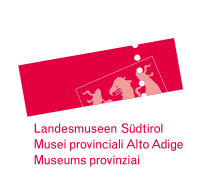Outer Bailey
Outer Bailey. There is evidence for the presence of human activity on the castle hill from the Copper Age onwards, whilst evidence points to continuous settlement from Roman times. In the Middle Ages the upper outer bailey was filled with buildings used by the domestic servants and craftsmen who guaranteed the castle’s self-sufficiency. By contrast, the lower outer bailey was the site of a fishpond as well as the stables where the rulers’ horses were kept.
The Outer Bailey was given a make-over in 2001 with the contemporary installation by the artist Gottfried Bechtold from Vorarlberg in Austria, and which illustrates the course of human development. This “Bechtoldweg” (Bechtold Path) features a wide variety of imprints made in the surface of the path, including Margarete’s bridal cup, tracks of native animals and the contemporary tyre tread marks from a mountain bike. The castle hill, from which one can enjoy a wonderful panoramic view, was not only of strategic importance, but also of symbolic importance, for it served as a safe place above the boggy valley floor. Even the origin of the word “Tirol” can be traced back to this hill, which was described as “tir”, Indo-European for “dry”.


